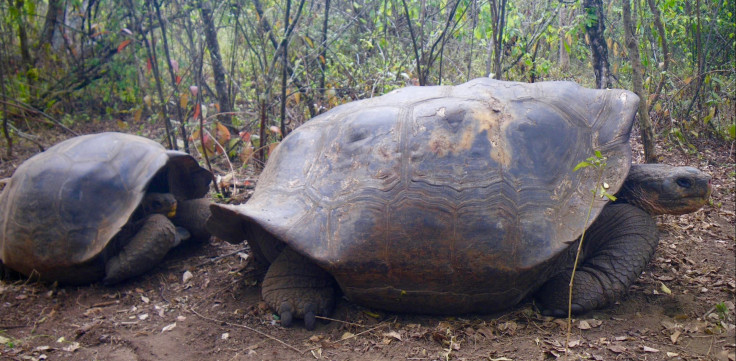Mr. Mabel: 90-Pound Tortoise That Escaped Is Reunited With Family

Mr. Mabel, a 90-pound African sulcata tortoise belonging to Kevin and his wife Amy Goulart broke out of his stockade on Oct. 9 in Dean, Texas. His family practically went crazy searching for him all. Thanks to social media and kind strangers, Mr. Mabel was reunited with the family.
"A lot of people are like, how do you let a tortoise escape?" Kevin said, quoted USA Today. "They’re like bulldozers."
Turns out Mr. Mabel escaped through a weak spot in his enclosure. Amy had given him water and returned an hour later to find him gone.
Finding their lovely pet was not an easy job. The couple notified law-enforcement agencies and distributed flyers carrying Mr. Mabel's photo around North Texas and Southern Oklahoma.
There were many sightings of Mr. Mabel, around Oklahoma City and Dallas, but those tortoises turned out to be not their Mr. Mabel. The Goularts' tortoise was reportedly last seen over Wichita County line just nearby Russell’s Fireworks on Texas Highway 79, where he was trying to cross the road.
Ashley Miller, who was driving by in her car, noticed people gathered around Mr. Mabel and assisted to drop Mr. Mabel at Rodney Reynolds’ home. Mabel found a temporary home in Reynolds’ residence which was just near Texas Highway 79.
Miller was determined to find Mr. Mabel his family and took photos of him and posted them on Facebook.
Soon, Kevin got a message from his friend Justin Deegan, who alerted him about a lost tortoise found nearby. This made the Goularts nervous but also expectant with hopes. They made it to Reynolds' home where they found Mr. Mabel. Their joy knew no bound!
"He actually looks bigger than when he left," Kevin dramatically said. "You can tell he's been eating good."
What makes Mr. Mabel the apple of the Goularts’ eye?
“He’s friendly," Kevin said, referring to sulcata tortoises’ personality. "They know you, and they know your voice. They’ll come up to you and let you scratch their head."





















